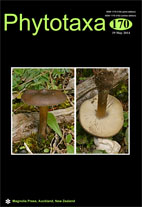Issue:
Vol. 170 No. 1: 19 May 2014
Type: Article
Published: 2014-05-19
Page range: 001–012
Abstract views: 160
PDF downloaded: 1
Biogeographical variability and re-description of an imperfectly known species Hamatocanthoscypha rotundispora (Helotiales, Hyaloscyphaceae)
Rudjer Boskovic Institute
Division for Marine and Environmental Research
Bijenicka cesta 54
10 000 Zagreb
##plugins.generic.jatsParser.article.authorBio##
×
IVANA KUŠAN
Division for Marine and Environmental Research
PhD student
Rudjer Boskovic Institute
Division for Marine and Environmental Research
Bijenicka cesta 54
10 000 Zagreb
##plugins.generic.jatsParser.article.authorBio##
×
NEVEN MATOČEC
Division for Marine and Environmental ResearchJosip Juraj Strossmayer University
Department of Biology
Sub-department of Quantitative Ecology
Cara Hadrijana 8/A
31000 Osijek
##plugins.generic.jatsParser.article.authorBio##
×
OLEG ANTONIĆ
Department of Biology
Sub-department of Quantitative Ecology
Associate Professor
Private address:
2 Impasse des Marronniers
Poivendre
79360 Marigny
Ascomycota
ascospore morphology
biogeography
ecology
methodology
microscopy
How to Cite
Kušan, I., Matočec, N., Antonić, O. & Hairaud, M. (2014)
Biogeographical variability and re-description of an imperfectly known species Hamatocanthoscypha rotundispora (Helotiales, Hyaloscyphaceae)
. Phytotaxa 170 (1): 001–012. https://doi.org/10.11646/phytotaxa.170.1.1
